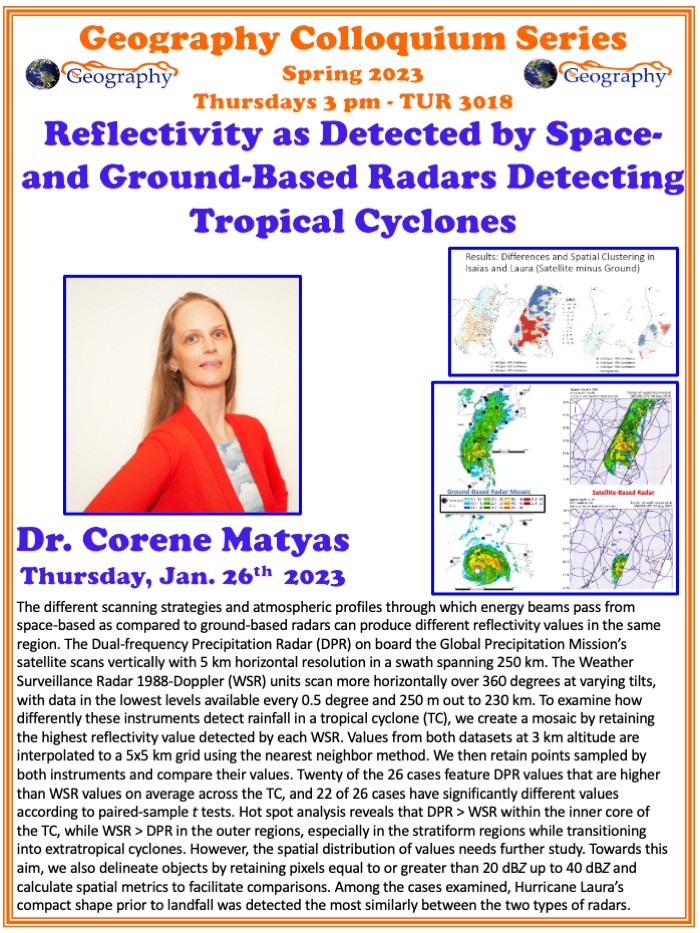 Speaker: Dr. Corene Matyas
Speaker: Dr. Corene Matyas
Professor
Department of Geography
University of Florida
Thursday, January 26, 2023
3:00-3:50 PM (Period 8)
Turlington Hall 3018 and Zoom
University of Florida
Abstract: The different scanning strategies and atmospheric profiles through which energy beams pass from space-based as compared to ground-based radars can produce different reflectivity values in the same region. The Dual-frequency Precipitation Radar (DPR) on board the Global Precipitation Mission’s satellite scans vertically with 5 km horizontal resolution in a swath spanning 250 km. The Weather Surveillance Radar 1988-Doppler (WSR) units scan more horizontally over 360 degrees at varying tilts, with data in the lowest levels available every 0.5 degree and 250 m out to 230 km. To examine how differently these instruments detect rainfall in a tropical cyclone (TC), we create a mosaic by retaining the highest reflectivity value detected by each WSR. Values from both datasets at 3 km altitude are interpolated to a 5×5 km grid using the nearest neighbor method. We then retain points sampled by both instruments and compare their values. Twenty of the 26 cases feature DPR values that are higher than WSR values on average across the TC, and 22 of 26 cases have significantly different values according to paired-sample t tests. Hot spot analysis reveals that DPR > WSR within the inner core of the TC, while WSR > DPR in the outer regions, especially in the stratiform regions while transitioning into extratropical cyclones. However, the spatial distribution of values needs further study. Towards this aim, we also delineate objects by retaining pixels equal to or greater than 20 dBZ up to 40 dBZ and calculate spatial metrics to facilitate comparisons. Among the cases examined, Hurricane Laura’s compact shape prior to landfall was detected the most similarly between the two types of radars.
All are welcome to attend.
For more information, email Dr. Sadie Ryan at sjryan@ufl.edu